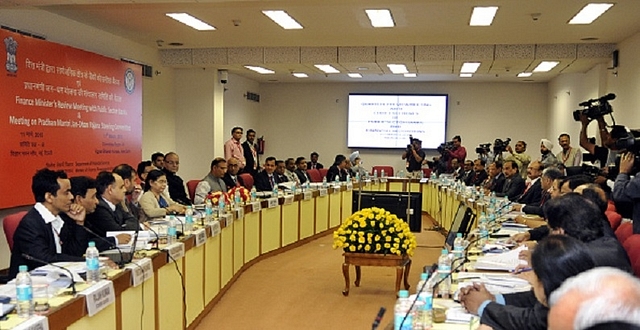
Tsunami In The Indian Banking Sector - How Crony Capitalism Works Here
The reason for the high level of NPAs in public sector banks is the unholy “businessman-bureaucrat-politician” nexus of the UPA years. Making higher level appointments, transparent is the only way out.
In the last few days, a lot has appeared on the asset quality, earnings of banks in general and public sector banks in particular. Newspapers are carrying editorials everyday. Recently a statement from the MoS- Finance blamed the ills on the previous UPA government.
While, a lot has been written regarding the state of assets in the banking system, some ills are needed to be addressed.
Many Chairman & Managing Directors (CMDs) in the PSU banks owe their position to the system prevailing during the UPA regime. It was the days of the “business man- bureaucrat-politician” nexus which decided on the appointments of Executive Directors (EDs) and CMDs of banks and a fair share of assets which have been booked by banks are the “payback” of these luminaries to their benefactors.
There have been statements such as one from the MD of Punjab National Bank (PNB), saying that the deteriorating assets quality is due to the economic situation. This begs the question that if banks are going to function as a “windsock” to the economic situation, then why do we need such experienced bankers to run banks. Banks can then be run headless as now being demonstrated by driver less cars.
Coming back to the argument on the contribution of the ED’s and CMD’s to the booking of poor assets, it’s a well-known secret as to which bank’s top functionaries will “bend” to which set of power brokers.
While large steel, power and infrastructure projects may be stuck for want of clearance on the last mile, what about the scores of assets from medium scale enterprises booked by banks as return for favours. They are also languishing as NPAs or stressed assets. Some of them were presented as a standard but due to the RBI diktat, is now shown as stressed.
The instruction to come clean by 2017 is what is forcing banks to bring out all the skeletons from the cupboard as also the fact that the previous incumbent’s ills can be washed away at tax payers money. The point will be well illustrated by a real case study-
A medium size trading company, the promoter of which had/has an excellent network among top bureaucrats and ministers has loans approved by a few of the PSU banks. The firm is trading in paper and timber.
Suddenly, our firm decides to enter into the field of real estate/infrastructure and sets up a SEZ which is funded by a PSU bank, the CMD of which has been “blessed” by this promoter. The project is set up with inflated costs to provide for diversion of funds.
Currently the project languishes for want of occupancy and the concerned bank has an exposure of over Rs 100 crores to this group for the SEZ.
So, how does the bank tide over the crisis? It gives another loan to the promoter against his residential property again inflating the value of the house. This loan is to be used for periodic servicing of the earlier project loan. The CMD of the bank is afraid to talk to the promoter as he is a beneficiary of the “power broking” done by the latter.
Another PSU bank is approached for an asset finance assistance to purchase an asset completely unrelated to the firm. In addition to that, the firm has no proven expertise nor has it hired expertise in the area. The CMD approves a loan in foreign currency from one of his overseas branch by way of a “bridge loan” for one year.
Now, any young credit analyst will wonder why a bridge loan for an asset is falling under a project loan? Well, the bank has decided so and at the end of one year when the loan liabilities cannot be serviced, it shifts the loan to another overseas branch. The favour is returned for the blessings.
Like this, there are numerous loans which have gone to these power brokers and the honest tax payer will have to bear the brunt of recapitalisation of banks at the cost of developing the country’s basic infrastructure.
The banks have to revalue these over-valued securities, and book losses against them. Then they should start the recovery process either by invoking Strategic Debt Restructuring (SDR) or selling them to Asset Re-construction Companies (ARC’s).
We must accept the covert overvaluations which are done to protect the quality of such loans and then set about the recalibration of these dubious loans, which presumably is being done as indicated by the provisions shown in the recent Q3 results.
The need of the hour is also to review appointments and bring ‘transparency and merit based’ appointments of key posts. Government should immediately take up the task of appointing ED’s and MD’s out of the public sector system. Empowering the Bank Board Bureau (BBB) would be the first right step.
Also, the individual sanctioning powers of the ED’s/ CMD’s must be done away with and a committee which may include one non-executive independent director be set up for the approval of loans. This committee should also review the portfolio and then restore correct valuations for such dubious loans which are not the result of economic situations but brought about by the crony capitalists.